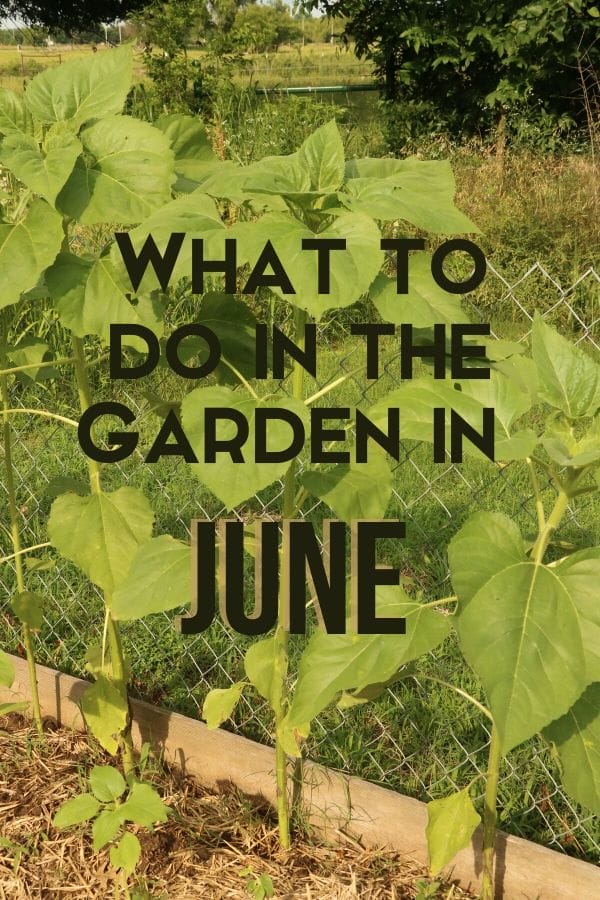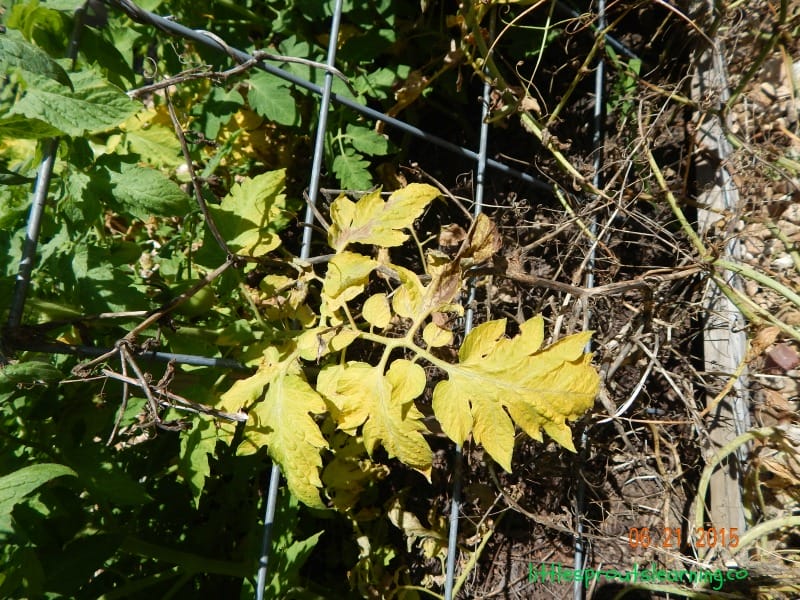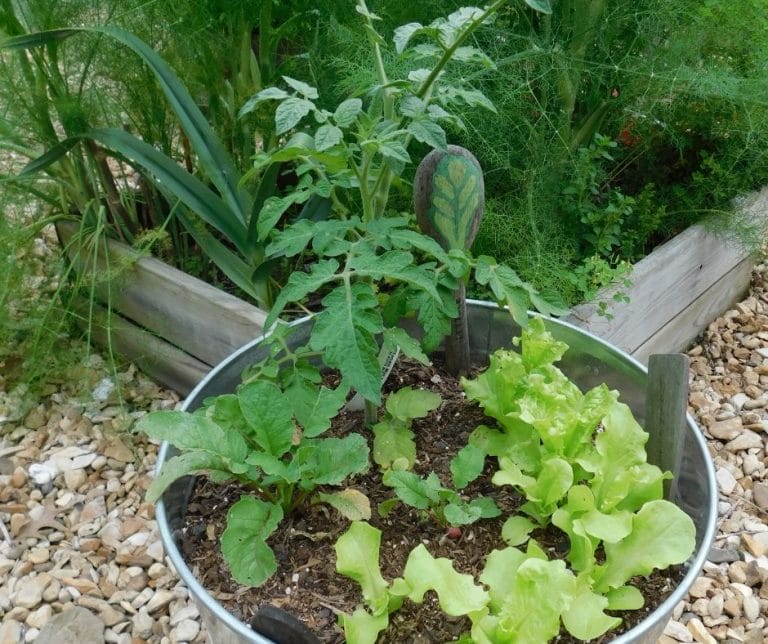What to do in the Garden in June
This page may contain affiliate links. Learn More.
Everything is growing and the chores are bustling right along. The garden in June is a flurry of fun. And for more garden planning help, check out this month by month garden planting guide.
Gardening in June
Most of the seeds and plants are planted by June. There are a few things you can still plant such as beans, okra, and melons. You could even plant pepper and tomato plants now.
At Little Sprouts we do some succession planting so we will continue to have things to harvest as the plants such as bush beans get done producing. We usually try to plant beans and squashes every three weeks or so. This gives us a continuous harvest.
Most of the garden work right now is weeding. Everything has been built and filled and planted. Now we just have to keep the Johnson and Bermuda grass from taking over the beds and walkways. We try to pick weeds every day.
I try to pick a few weeds in the morning when I have the kids out in the gardens and on the weekends we try to spend a couple of early morning hours picking them.
The garden is never totally weed-free, but we try to keep up with the bulk of it so our plants will have water, sunlight, and nutrients enough for themselves. Click here to see ways we keep weeds from becoming too overwhelming.
Another thing that’s important to remember in June is water. This year in Oklahoma, we’ve had a crazy wet May and June, but usually, we need to water weekly. The garden needs an inch of water per week, so if you’re not seeing any rain, you need to water. Click here to see how we measure our water needs.
Bugs are out in full force. Keep an eye each day on predators that may be invading your garden. Look for signs of damage and hand-pick anything that you can see eating your harvests.
Squash bugs are appearing, so daily we need to be turning over every squash leaf and looking underneath for eggs. Squash bug eggs are a copper color and are laid in clusters on the undersides of leaves. If you see some, get rid of them.
We also hand-pick squash bugs and harlequin beetles from our plants and throw them in a bucket of soapy water to kill them. We look for cabbage looper worms and tomato horn worms and do the same with them as well. It’s also time to think about slugs, grasshoppers, and other pests.
We sprinkle a bit of diatomaceous earth around to help reduce the population of slugs. Click here to see how. Since we don’t use sprays in our garden, we have to be vigilant about getting rid of the bag bugs that are crawling around out there.
We hope that nature will lend us a helping hand by sending frogs, birds, lizards, spiders, and ladybugs that will eat as many of our bad bugs as they can find.
It’s also a good idea to check often for signs of disease and decide what you want to do to treat it. June brought us a LOT of rain, so we already have some tomato fungus forming. I will need to take all of the affected leaves off and dispose of them to keep this from spreading.
The garden in June is full of harvesting. There is plenty to pick in the garden including green beans, peas, cabbage, broccoli, carrots, lettuce, kale, kohlrabi, tomatoes, potatoes, garlic, and herbs. At the beginning of June we were still harvesting asparagus, but it’s pretty much done producing now.
The garden in June is hot for working but with the glut of delightful produce, it’s one of the most exciting times. So far this month we have harvested over 82 pounds of tasty goodness and are looking forward to harvesting more. We love our garden!
For what to do in the garden each month, click here.
- What to do in the garden in January and February
- What to do in the garden in March
- What to do in the garden in April
- What to do in the garden in May
- What to do in the garden in July
- What to do in the garden in August
- What to do in the garden in September
- What to do in the garden in October
- What to do in the garden in November
- What to do in the garden in December










I’ve been working hard this year to keep the garden weed-free (ish). Do you usually pick when the weeds are a little bigger though? I have all of these really hard to pick weeds that are still low to the ground and I’m perplexed on how to pick them and get the roots too! Tempted to wait but yikes. I’ve been running my hands over the soil to sort of rake the area (going around the legit plants) and then picking the now loose weeds out. Hope that isn’t disastrously wrong 😉
I think you can do it any way that works for you, raking the area around the plants is just fine, people have done it with a hoe forever, just be careful with shallow rooted plants, you’ll see the roots when you swish your fingers over the area, if you see roots, be more gentle. 🙂
I should really make an effort to pick weeds every day! Thank for this helpful guide 🙂
Thanks for checking it out. It’s hard to get to them every day, but the more often the better. 🙂
Wow – super helpful! We have squash growing right now and I had no idea to check for the bugs. Never thought about it. Going out after dinner to do that!!
So excited that you are growing squash! Get those little bugers! 🙂 Thanks for reading!
Next year I want to expand our garden. What do I need to do to prepare the area? We’d like to plant 2 boxes.
If you are going to do raised beds, you just need to cover the area with several layers of cardboard, build some sort of frame, and lay it on there. Then fill it with some type of growing medium. I use a mix of 1/3 peat, 1/3 pine bark mulch, and 1/3 compost. I get it all from lowe’s. It has worked great for us. So excited that you are growing. Yippie! Thanks for reading!